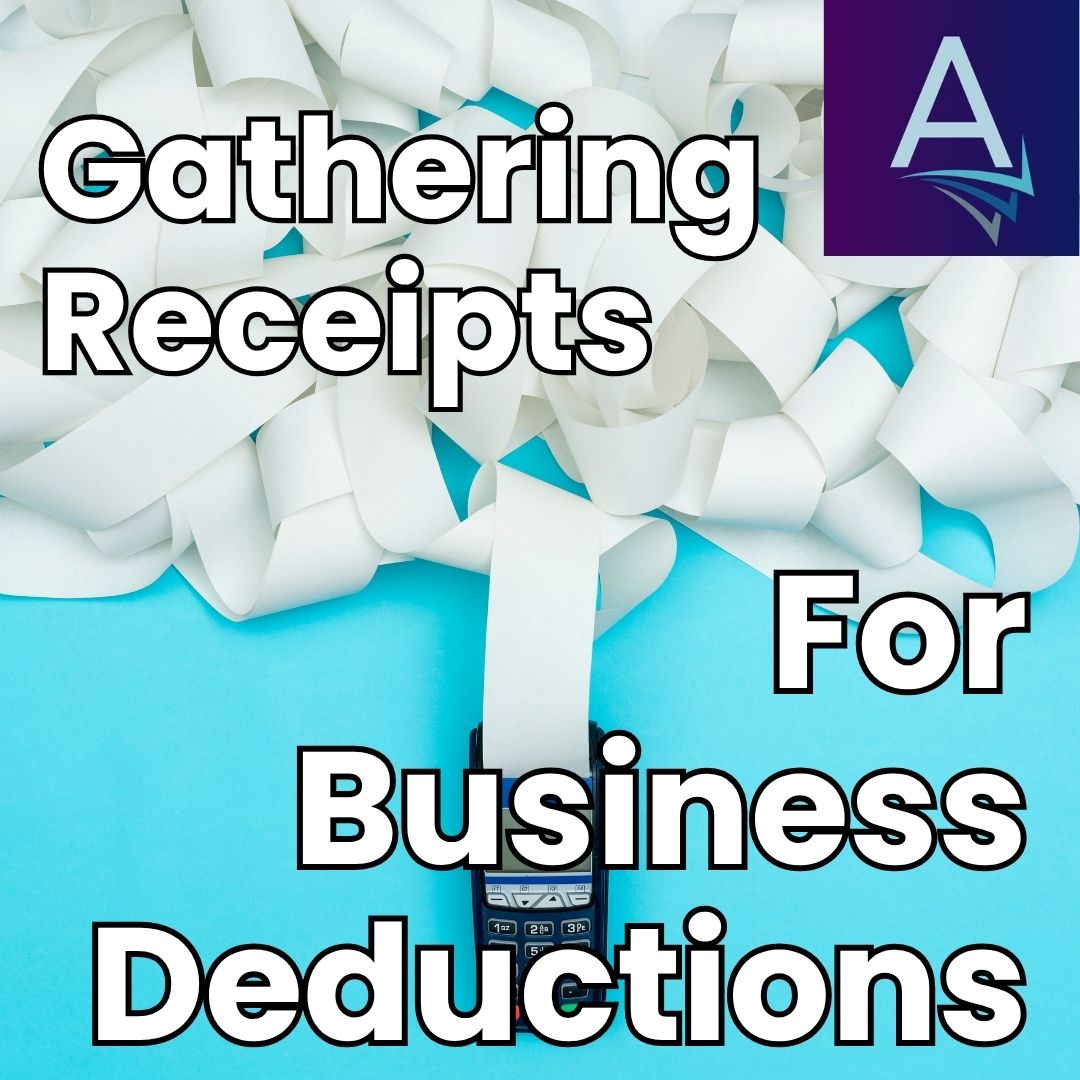It’s important to know how to track business receipts.
If you gather and keep your receipts like a bookkeeper would, you’ll save yourself a lot of unnecessary time.
Gathering receipts is very important. Here’s why:
- You can explain any deductible expense in case you get audited.
- You protect yourself from being overcharged in the future if you know how much you’re paying and notice when that number jumps up.
- There may be deductible expenses you aren’t claiming. Either because you don’t know that you can claim them, or you don’t know how to claim them. Your tax preparer likely knows more than you, and having those receipts can help.
- It prevents fraud and waste, especially if other people are making purchases on your behalf.
Saving Your Receipts Digitally
I recommend saving your receipts in two to three different places digitally. One copy can be on your accounting software like Quickbooks Online, the second can be on an app like Dext, Expensify, or Wellybox. All of these integrate with Quickbooks to my knowledge, though right now they cost $24, $5, and $19 a month, respectively. Dext seems simpler to use, but it’s up to you. Some of these apps will create Excel files or records that you can save, which can be the third location. Dext and Expensify seem best for mileage tracking, which is a regular expense for many businesses. To see more about mileage tracking for tax deductions, read this blog post.
Saving your Receipts Physically

The IRS can audit 3-6 years back. However, if you fail to file or if you neglect certain forms when owning a foreign company, the statute of limitations can be forever. On the other hand, doing business in the USA and filing every year, it is good practice to keep your receipts at least seven years. You can hold on to receipts longer than that for high-ticket things. Such things include buying and improving properties that the business owns, and other high-value asset purchases ($2500 or more).
How you do it depends on how many receipts you have and how they are categorized. For most businesses, annual binders with plastic sleeves are good for this, and separating the receipts into envelopes labelled for every 1-2 weeks can narrow it down even further. If you do project-based work, like construction, a binder for each project with the date range the project was worked on is a good strategy. Again, use a digital receipt tracker to get that data on a computer for ease of access before filing it away. The physical receipt should be a last resort. You’re better off having it, but not needing it, than to need it and yet not have it!
A Second Set of Eyes
If you are concerned about categorizing transactions, having a bookkeeper can really help you save time and money. Most business owners spend 10-12 hours per month just working on their bookkeeping. This doesn’t have to be you! Schedule a call with me so I can learn about your business, your goals, and how I can save you 8-10 hours of that time each month. What can you do with an extra 80+ hours per year?


Leave a Reply